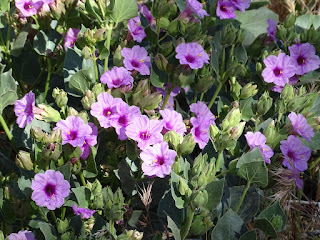Before moving to the southwest, I had zero knowledge of the amazing diversity of plants that flourish in this region. California is considered a biodiversity hotspot due to the high number of endemic species that are located here. That includes 61percent of the 3,500 species of plants unique to this area. Despite my minimal knowledge of plants, I never grow tired of the blooms that begin to appear each Spring. They are critical to a healthy ecosystem that supports all the critters and insects that make it their home.
View from Cactus Springs trail
Years ago, a dear ornithologist friend told me that one day I would want to be a Master Gardener since I was a bird lover. I didn't quite understand at the time but I do now. We support birds and other pollinators such as butterflies and bees when we are gardening.

Scott's Oriole (Icterus parisorum)
These are a couple of the birds that showed themselves to me on this arid trail.
Yucca
When you are used to living in a forest of trees, you don't think of the few woodpeckers that need to make a nest in a landscape with little or no trees. The Ladder-backed Woodpecker (Picoides scalaris) is one that can utilize yucca snags for nesting.
Giant Four O'Clock
When I started my early morning hike, these beauties were like this but a few hours later, they had totally closed up- a good technique for avoiding the heat of the intense sun. Next stop, the high country for inspiration for my own garden.
Click on photos to enlarge.
Photos and content by Robin Roberts.
View from Cactus Springs trail
Years ago, a dear ornithologist friend told me that one day I would want to be a Master Gardener since I was a bird lover. I didn't quite understand at the time but I do now. We support birds and other pollinators such as butterflies and bees when we are gardening.
Black-throated Sparrow (Amphispiza bilineata)

Scott's Oriole (Icterus parisorum)
These are a couple of the birds that showed themselves to me on this arid trail.
Yucca
When you are used to living in a forest of trees, you don't think of the few woodpeckers that need to make a nest in a landscape with little or no trees. The Ladder-backed Woodpecker (Picoides scalaris) is one that can utilize yucca snags for nesting.
Giant Four O'Clock
When I started my early morning hike, these beauties were like this but a few hours later, they had totally closed up- a good technique for avoiding the heat of the intense sun. Next stop, the high country for inspiration for my own garden.
Click on photos to enlarge.
Photos and content by Robin Roberts.







